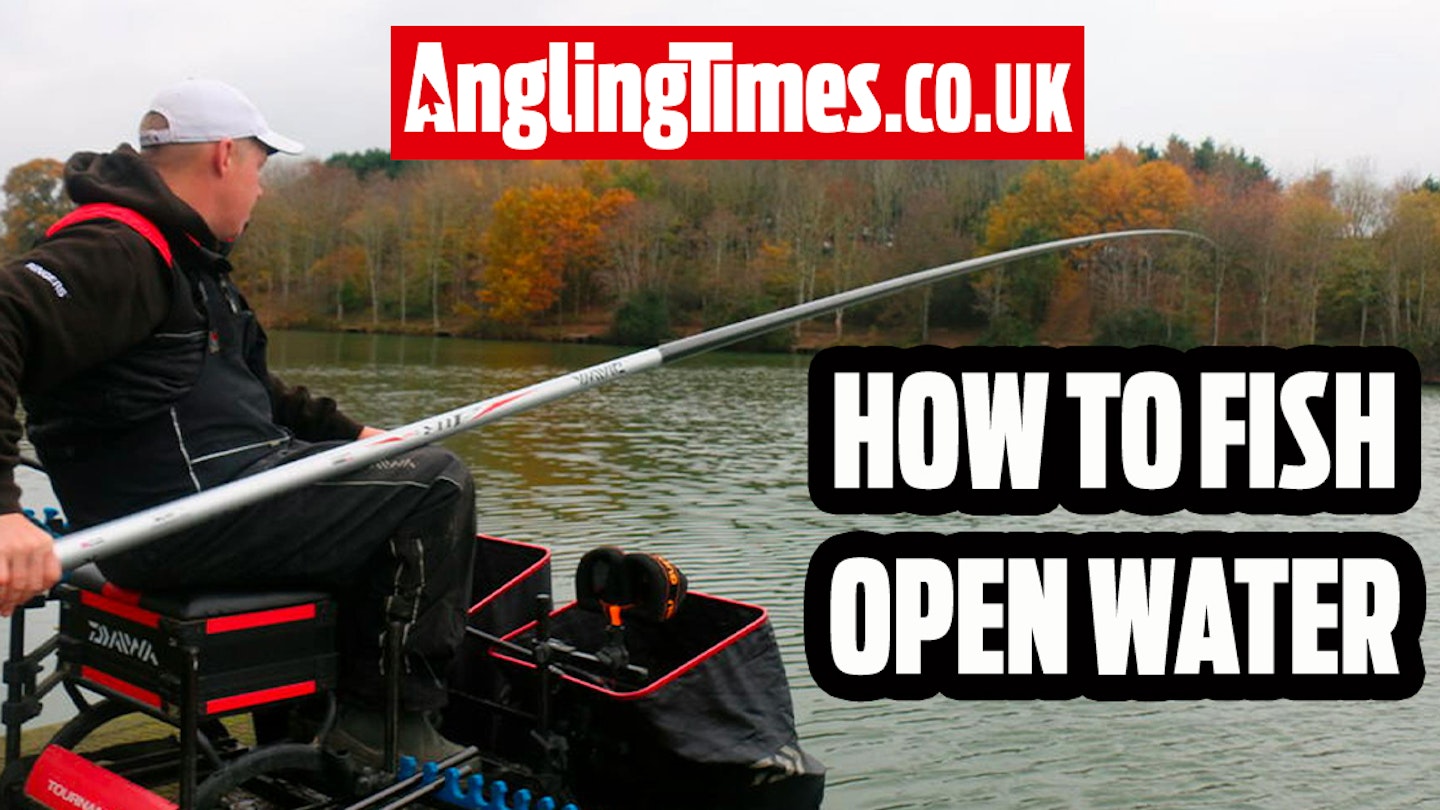Fishing an open water peg or swim can be tricky. Where do you cast? Long? Short? What about the waggler? The answers, as ever, all come down to keeping things simple and adapting to the conditions you face. Features like islands and snags can make the choice of where to fish obvious, but an open water swim may have the best feature of all - deep water.
Here's five expert tips to help you get the most from an open water peg...
Kick off on the waggler
Start by chucking the waggler, partly to give any pole lines the chance to settle after being fed, but also to see if any early carp are present past pole range. You’ll normally catch carp early and late in a match, but you should also keep your eyes open and look around to see if fish are being caught on the float elsewhere. However, play the percentages. If those around you change to the pole, get back out on the waggler for a spell, as you’ll have this water all to yourself and could well pick up a few bonus fish.
GET THE BEST RODS FOR WAGGLER FISHING IN THIS BUYER'S GUIDE.

Think long
Carp have been balled up for months in the colder weather, and that won’t have changed much yet, so you need to be fishing far enough out to keep in touch. That means going out to 14.5m or 16m on the long pole. The depth here will be uniform and the bottom flat, meaning that any fish that are further out can be coaxed into investigating the spot you are feeding. Fish closer in and it will probably take longer for the fish to turn up, if they actually venture this close in at all.
GET THE BEST POLES FOR MATCH FISHING WITH OUR BUYER'S GUIDE.

Pick pellets for quality fish
If carp are the target, that means pellets. Maggots can work, but silverfish love them too, and you want to know that when you get a bite and hook a fish, it’s going to be a carp. For that reason, quite big pellets for the time of year – 6mm, or perhaps even 8mm hard pellets, fished in a band – are a must. Expander pellets can work but, again, can be smashed by little fish. A bigger pellet stands out far better to the carp.

Have some patience
Some anglers may get an indication on the float but then lose patience and lift the rig, or perhaps come off that line altogether because a proper bite hasn’t followed. That’s wrong! A carp may knock the pellet without taking it, but then wolf it down four or five minutes later. As long as you get that indication, then you can be confident that a bite won’t be long in coming. Don’t move the rig – just sit tight and wait for the float to go. It’s rare for this not to happen.
MAKE SURE YOU'RE SITTING COMFORTABLY ON THE BANK WITH OUR GUIDE TO BEST SEATBOXES.

Leave the short line for later
Fishing short is a gamble, but a few carp will move closer to the bank late in the day, making a spot around 6m out the perfect place to have a third line. It’ll be the same depth here as what you have on the long pole, although this swim may only come good in the last hour of a match. If there’s space, put this swim in well down the peg, using 11m of pole but only fishing that 6m out from the bank. That creates a bit of quiet water where the fish will feel more confident.
GET THE BEST MARGIN POLES FOR BIG CARP IN THIS IN-DEPTH BUYER'S GUIDE.

This page is a free example of the amazing content Angling Times Members get every single week. Becoming an Angling Times Member gives you access to award-winning magazine content, member rewards, our back issue archives, bonus content and more! Join our fishing community and find out more today!
